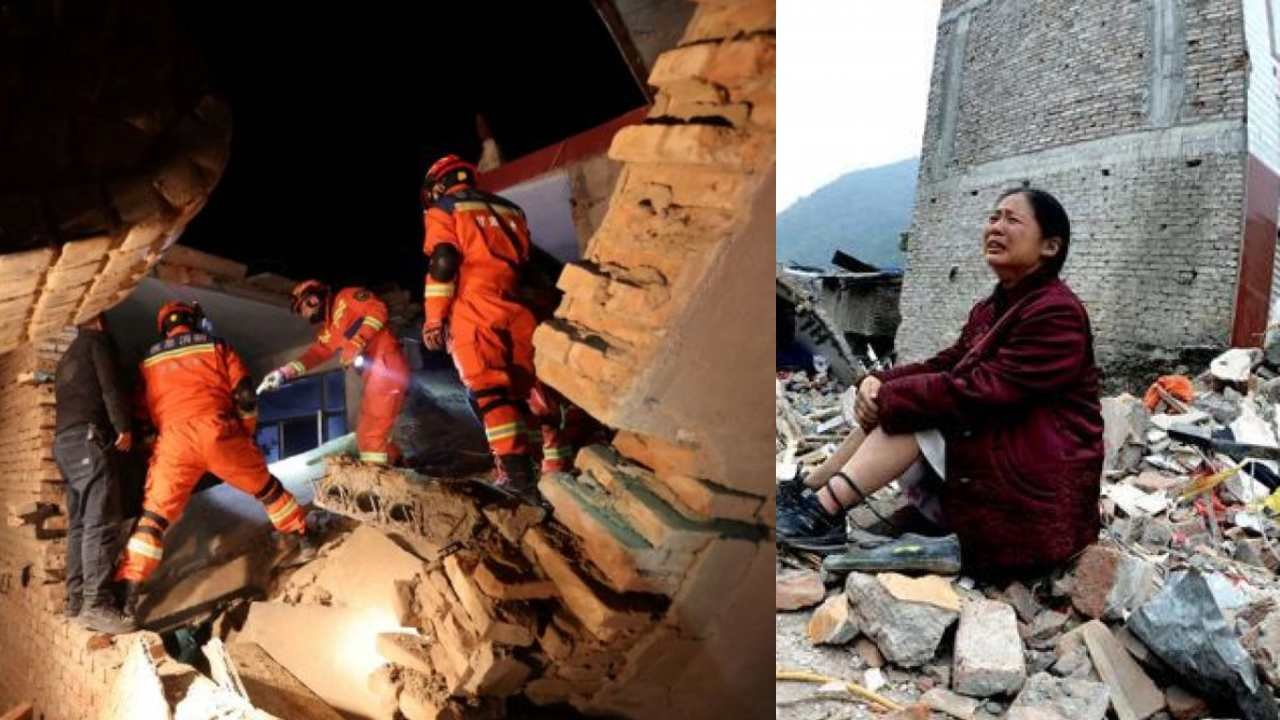When a powerful earthquake of magnitude 7.2 struck Xinjiang, China, intense tremors were felt in the Delhi-NCR region, injuring several people and collapsing several houses.
Contents:
On Monday night, an earthquake measuring 7.2 on the Richter scale hit the Delhi-National Capital Region with strong tremors. National Center for Seismology reported earthquake details: Magnitude 7.2, on 22-01-2024 at 23:39:11 IST, Latitude: 40.96, Longitude: 78.30, Depth: 80 km, Location: Southern Xinjiang, China.
Authorities there confirmed several injuries and reported incidents of house collapse along the Kyrgyzstan-Xinjiang border. In response to the earthquake, the Xinjiang Railway Department immediately halted operations, affecting 27 trains in the region.
How to protect yourself from the earthquake
To protect yourself from an earthquake, consider the following suggestions:
- Drop, Cover, and Hold On: During shaking, drop to the ground, take cover under a sturdy piece of furniture, and hold on until the shaking stops.
- Stay Indoors: If you are inside a building, stay there. Avoid doorways and windows, and seek shelter under a desk or table.
- Stay Away from Objects: Keep away from heavy furniture, appliances, and other objects that may pose a threat during an earthquake.
- Find a Safe Spot: Identify safe spots in each room, such as under sturdy furniture or against an interior wall, and practice taking cover in those areas.
- Have an Emergency Kit: Prepare an emergency kit with essentials like water, non-perishable food, first aid supplies, a flashlight, and important documents.
- Secure Heavy Items: Anchor heavy furniture, appliances, and objects to prevent them from falling during an earthquake.
- Know Your Escape Routes: Familiarize yourself with exit routes from buildings and have a designated meeting place for family members outside.
- Stay Informed: Keep a battery-powered or hand-crank radio to receive updates and follow emergency instructions.
- Practice Drills: Conduct earthquake drills with your family or colleagues to ensure everyone knows what to do during an earthquake.
- Plan for Aftermath: Be prepared for aftershocks and have a plan for post-earthquake actions, such as checking for injuries and assessing your surroundings for hazards.
Read more about Royal Enfield
The Most Earthquake-Prone Place in the World:
Earthquake activity is a natural phenomenon, but some regions around the globe are more prone to seismic events than others. Topping the list as the most earthquake-prone places in the world is the Pacific Ring of Fire. This horseshoe-shaped zone encircles the Pacific Ocean, encompassing numerous countries known for their tectonic instability.
Key Features of the Pacific Ring of Fire:
- Tectonic Plate Boundaries: The Pacific Ring of Fire is characterized by the convergence of several major tectonic plates, including the Pacific Plate, the Philippine Sea Plate, and the Indo-Australian Plate. The interactions between these plates result in intense geological activity.
- Volcanic Activity: In addition to earthquakes, the Ring of Fire is home to numerous active volcanoes. The same tectonic forces that cause earthquakes also contribute to volcanic eruptions, creating a dynamic geological environment.
- Countries Affected: The countries bordering the Pacific Ring of Fire, such as Japan, Indonesia, New Zealand, and Chile, experience frequent seismic events. These nations have adapted their infrastructure and emergency preparedness measures to cope with the challenges posed by their seismic surroundings.
Impact on Local Communities:
Living in the most earthquake-prone place in the world comes with its share of challenges. Local populations must contend with the constant threat of ground-shaking events, requiring robust building codes, early warning systems, and community education initiatives.
Understanding the geological forces at play in the Pacific Ring of Fire sheds light on why it holds the title of the most earthquake-prone place in the world. As scientists continue to study these seismic hotspots, communities in the region remain vigilant and prepared to navigate the unpredictable nature of their dynamic surroundings.













